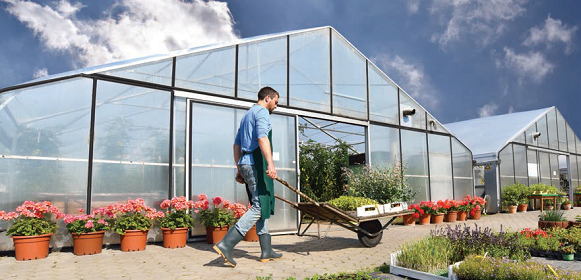Michal Slawski, development and marketing specialist at Bord Bia, disseminates the findings from the recent horticultural labour market review
Bord Bia recently commissioned a review of labour in the horticulture industry. An initial review was completed in 2007 and updated in 2016. The labour review was updated to provide current estimates of the level of employment within horticulture, as well as the factors affecting employment. Information on the total scale of employment within horticulture, as well as all the subsectors, is important for planning purposes. The new survey also broadened out the scope of previous work, looking at some of the upstream and downstream industries that support horticulture and provide further employment. Finally, a value has been put on the contribution that horticultural employment makes to the local economy.
In addition to desk research, a substantial number of interviews were also carried out across all sectors to provide a comprehensive picture of labour within the industry.
Maintaining and developing both the domestic and export markets for horticultural produce is critical to expanding employment opportunities. While much of Ireland’s horticultural output is sold on the domestic market, the industry has also developed important export markets, particularly the UK for mushroom exports. Based on currently available data, the industry employs over 6,600 staff at farm gate level and a further 11,000 in value-added and downstream activities. Farmgate horticultural employment is estimated to be worth €165m annually to the Irish economy, in the context of farmgate output valued at €424m.
The review identified a number of key factors and challenges impacting on the labour area in feedback from the industry including changes to the minimum wage: increasing competition for staff as the economy grows; the uncertainty associated with Brexit; the need for ongoing investment in the sector in order to maintain competitiveness in the international marketplace; upskilling staff and the need to market the horticultural industry positively so as to encourage students (and new entrants) to consider horticulture as a career.
Labour is a critical input for horticultural businesses and for some, labour costs can represent up to 50% of overall costs. Labour cost competitiveness and availability are common concerns for the industry. Against a backdrop of tightening business margins, especially where businesses are supplying the retail sector, future wage certainty is strategically important for horticultural businesses if they are to develop long-term growth
strategies. The recent volatility in euro/Sterling exchange rates is another major issue facing horticultural businesses.
“Labour is a critical input for horticultural businesses and for some, labour costs can represent up to 50% of overall costs”
The level of seasonally adjusted unemployment dropped to 7.9% in Ireland in September 2016.
Economic growth is increasing demand for horticultural produce and this business boost is very welcome, following the slump of the economic recession. However, horticulture is facing increasing labour competition from sectors such as construction, IT, hospitality and food service, which are also responding to the economic stimulus.
Migration is an important feature of the labour market in Ireland. While the recession period brought negative migration flows, 2016 saw the shift to positive migration flows again. Availability of migrant workers has been critically important for the horticultural
industry in Ireland and elsewhere in Europe, the mushroom sector being a case in point. Other sectors that are very seasonal in nature also rely on migrant workers, e.g. soft fruit,
flowers, vegetables, bulbs, and potatoes. Ensuring that there is a strong supply of seasonal migrant workers is strategically important for the ongoing development of the horticultural industry. The report highlights where labour shortages are identified in the horticultural industry that consideration will have to be given to addressing this challenge through the
work permit system. Labour supply and demand will require ongoing monitoring with a view to proactively managing labour availability for the industry.
Looking at Irish labour costs in its various components shows that ‘other labour costs’ represent 13.5% of the total labour costs for Irish businesses. The additional costs for businesses generally, over and above the gross wage bill, include statutory social contributions, non-statutory social contributions, benefit in kind etc. The effective cost of
labour – minimum wage plus 13% – must be borne in mind when the level of the minimum wage is being discussed.
The review benchmarks Ireland’s minimum wage in the context of other countries, showing that Ireland has the second highest rate after Luxembourg and is closely followed by the rate in Germany, France, Holland, and Belgium.
These contrast with much lower rates in a number of eastern European countries. Ireland is ranked next to the UK, the country’s largest trading partner.
The report indicates that Ireland’s minimum wage grew from €5.85 in 2000 to €9.15 in 2016, i.e. a 65.7% increase over the base year. The UK minimum wage is currently £7.20 while the euro equivalent (based on £0.85 exchange rate) is €8.47. In nominal terms, the UK has a cost advantage over Ireland at this exchange rate. The cost advantage will need to be monitored in the context of Brexit, exchange rate volatility, and purchasing power parity. ✽
 MICHAL SLAWSKI is a development and marketing specialist at Bord Bia. He can be contacted by phone on 01 668 5155 or via michael.slawski@bordbia.ie
MICHAL SLAWSKI is a development and marketing specialist at Bord Bia. He can be contacted by phone on 01 668 5155 or via michael.slawski@bordbia.ie





